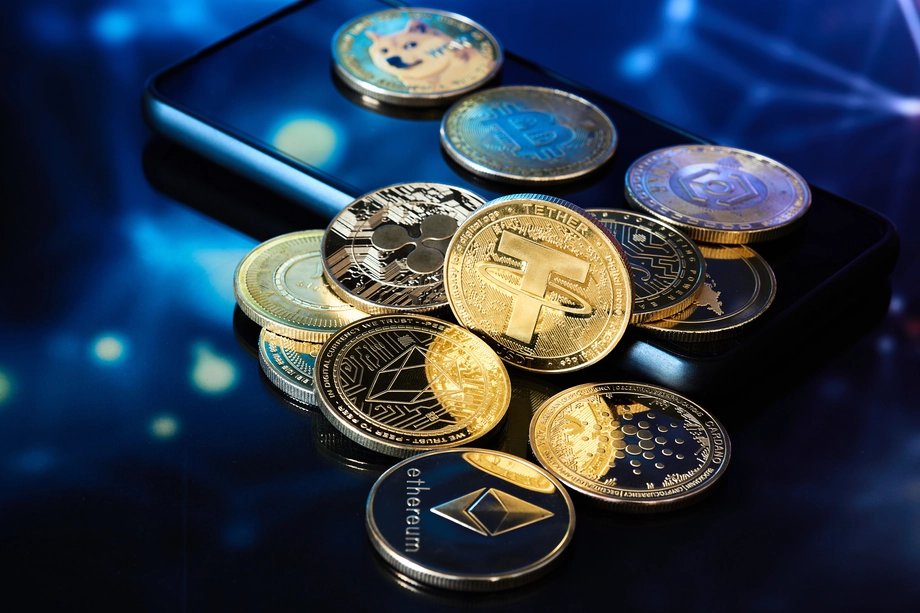The Future of Cryptocurrencies: Patterns to View in the Coming Years
The appearance of Central Financial institution Digital Currencies (CBDCs) stands to redefine the combination of electronic assets within typical financial systems, while raised governing scrutiny may shape the functional landscape for cryptocurrencies. Furthermore, the evolution of decentralized finance (DeFi) and the expanding significance of non-fungible tokens (NFTs) promise to change assumptions of ownership and assessment in a digital economic climate.
Rise of Reserve Bank Digital Currencies
The development of Central Bank Digital Currencies (CBDCs) stands for a considerable shift in the monetary landscape as governments check out digital options to typical fiat cash. These state-backed electronic money aim to improve the effectiveness of repayment systems, advertise financial incorporation, and supply a safe and secure choice to private cryptocurrencies. Unlike decentralized digital currencies, CBDCs run under the auspices of reserve banks, ensuring governing oversight and security.
Several nations are actively piloting or looking into CBDCs, with significant instances consisting of China's digital yuan and the European Central Financial institution's digital euro campaign. These initiatives highlight a growing acknowledgment of the potential advantages of electronic money, such as faster transaction rates and reduced expenses connected with cross-border repayments. Moreover, CBDCs might work as a tool to battle illegal tasks by giving better openness in transactions.
As the adoption of CBDCs progresses, they might reshape customer habits and influence global economic characteristics. The shift to a digital currency structure provides obstacles, consisting of technological framework, cybersecurity problems, and public trust. The rise of CBDCs indicates a pivotal moment that can redefine the function of money in an increasingly electronic economic situation, necessitating close observation by industry stakeholders and policymakers alike.
Enhanced Governing Examination

Countries around the world are taking different strategies, from outright bans to governing sandboxes that enable technology while guaranteeing compliance. The European Union, as an example, is moving towards detailed regulation with the marketplaces in copyright-Assets Regulation (MiCA), focused on creating a unified approach across participant states. In the USA, firms like the SEC and CFTC are significantly energetic in releasing guidelines and enforcement activities.
This governing setting is likely to have substantial implications for market individuals. Business operating in the copyright room might deal with stricter conformity requirements, which can lead to boosted functional expenses. Clear guidelines could also promote better institutional investment, as firms look for to navigate an extra defined lawful landscape. Eventually, the balance in between development and guideline will certainly form the future of cryptocurrencies.
Advancement of DeFi Operatings Systems
Decentralized Money (DeFi) systems have actually undertaken significant improvement because their inception, improving the typical economic landscape - order cryptocurrencies. Originally, these systems largely concentrated on easy functions such as loaning and borrowing, assisted in by smart contracts on blockchain networks. The development of DeFi has increased to encompass a large variety of economic solutions, consisting of by-products trading, yield farming, and automated market-making.
Among the most noteworthy improvements is the appearance of Layer 2 options, which enhance scalability and minimize deal costs, making DeFi extra available to a more comprehensive target market. Furthermore, cross-chain interoperability has ended up being an essential focus, enabling customers to move possessions seamlessly throughout different blockchain networks. This advancement promotes higher liquidity and individual interaction.
Furthermore, the combination of sophisticated governance models has actually encouraged neighborhoods to join decision-making procedures, promoting sustainability and technology within the community. As DeFi continues to mature, we can anticipate further enhancements in user experience via boosted interfaces and safety and security measures, dealing with issues that have actually formerly prevented mainstream fostering. Overall, the trajectory of DeFi systems points towards a more inclusive and reliable monetary future, using choices to standard financial systems.
Assimilation of NFTs in Financing
In the middle of the fast evolution of the financial landscape, the assimilation of Non-Fungible Symbols (NFTs) has actually arised as a transformative pressure. Commonly related to digital art and antiques, NFTs are view currently discovering applications in various economic sectors, presenting cutting-edge methods to stand for ownership and value.
One significant location of integration remains in realty, where NFTs can enhance property purchases. By tokenizing realty properties, buyers can appreciate fractional ownership, lowering entry obstacles and increasing liquidity. order cryptocurrencies. Furthermore, NFTs can guarantee transparent and immutable records of ownership, enhancing count on property dealings
On the planet of financing, NFTs are likewise being made use of for decentralized finance (DeFi) applications, enabling collateralization of possessions. By utilizing NFTs as security, customers can access loans while preserving ownership of their digital properties. This capability boosts the availability of economic services and advertises a more inclusive financial ecosystem.
Additionally, the combination of NFTs right into conventional money can transform the way intellectual residential property civil liberties are managed, supplying creators with brand-new profits streams through wise contracts. In general, the integration of NFTs in money indicates a shift in the direction of even more innovative, effective, and transparent economic services, leading the way for future advancements.
Improvements in Blockchain Technology

One considerable pattern is the introduction of Layer 2 options, created to improve scalability and transaction speeds, thus addressing the constraints of primary blockchain networks. These options make it possible for much faster handling of purchases, lowering fees and increasing efficiency, which is crucial for mass adoption.
Moreover, interoperability in between various blockchain networks is getting grip. This advancement permits smooth data exchange and property transfers across varied platforms, advertising a much more linked and reliable ecosystem. Procedures that promote cross-chain communication are vital for cultivating collaboration amongst decentralized applications (copyright) and improving individual experiences.
In addition, improvements in consensus devices, such as proof-of-stake and delegated proof-of-stake, are adding to more energy-efficient and safe and secure blockchain operations. These innovations not just resolve environmental problems but likewise improve network strength.
As blockchain modern technology remains to mature, its assimilation right into different sectors, including money, supply chain, and health care, will certainly redefine typical systems, leading the way for a decentralized future.
Verdict
The introduction of Central Financial institution Digital Currencies click this will improve the integration of digital assets right into traditional monetary systems. In addition, the continual improvement of decentralized financing platforms and blockchain technology, along with the combination of non-fungible symbols, will redefine ownership and monetary transactions, fostering boosted fostering and development within the sector.